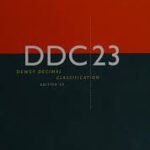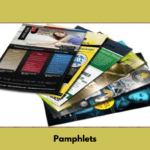Sorting/Weeding Books is not easy. Various experiments are being conducted in this regard. In different countries, articles are being registered with various rules and procedures in this regard. Although attrition is required for all libraries, no single rule for all countries has yet been found. That is why the publication of different opinions of different people is hindered.
Why is weeding important in libraries?
To keep a current collection of books and ensure that library users can access current information, weeding is essential. It facilitates the management of restricted physical space by creating space for fresh, more useful materials. Libraries can enhance the overall quality and appearance of their collections by getting rid of old, broken, or rarely used items. Weeding improves the user experience by lowering clutter and making materials easier to find and access. Because fewer items are likely to be in demand, it also improves circulation statistics. Through the allocation of resources to materials that best meet the needs of the community, this process supports the mission of the library. It also helps librarians find and fill in the collection’s gaps. The budget and resources of the library are maximized through weeding, which helps with effective collection management. By taking out broken or decaying objects, it also helps to maintain the collection’s physical integrity. Weeding ultimately makes sure that libraries continue to be vital, responsive, and dynamic community resources.
Which type of books shall be weeded in a library?
To maintain an up-to-date and reliable collection, libraries typically remove the following types of books:
- Outdated Information: Books with obsolete or inaccurate information, especially in fields like science, technology, medicine, and law, should be removed.
- Damaged or worn-out books: Items that are physically damaged, missing pages, or in poor condition should be removed, especially if they cannot be repaired or replaced.
- Low Circulation: Books that have not been checked out or used in a long time may be removed, especially if they do not align with the library’s mission or user needs.
- Duplicate Copies: Extra copies of the same title, particularly those that are no longer in high demand, can be removed to free up space.
- Superseded Editions: Older editions of books that have been replaced by newer, updated versions should be removed.
- Irrelevant or Obsolete Formats: Books in outdated formats, such as certain types of media or software manuals, that no longer have the necessary equipment for use should be considered for removal.
- Outdated or Irrelevant Topics: Books on topics that are no longer relevant or have become outdated (e.g., old travel guides, obsolete technologies) should be removed.
- Unpopular Genres or Titles: Books that consistently do not appeal to the library’s user base, even if in good condition, may be removed to better align the collection with patrons’ preferences.
- Incomplete Series: Incomplete series where the missing volumes cannot be acquired may be removed if the series cannot be fully enjoyed or utilized by patrons.
- Poorly Reviewed or Low-Quality Books: Books that received poor reviews, are of low literary or informational quality, or were impulse purchases that do not fit the collection’s scope may be removed.

In an American magazine in 1991, Rosanne Cerny expressed her own opinion on book sorting in light of the original ten categories of Dewey decimal classification.
000: General
Subject encyclopedias should be revised every five years. General encyclopedias should be edited every eight years. Computer publications should be pruned every two to three years.
100: Philosophy & Psychology
Popular psychology books and self-help books quickly become outdated. That is why old books are removed and new ideas and new publications are given place on the subject. Dissertations get scrapped in 8 to 10 years. New topics are included.
200: Religion
Among the books on religion, New Thought research and liberal books are kept and old books on old thought and doctrine are discarded.
300: Social Science
The reference materials of such books are taken up every two to three years and new collections are taken up.
400: Language
Language is a constantly evolving subject, and what was once considered the gold standard in research and methodology may now be outdated. Therefore, it’s important to stay updated with the latest findings and techniques.
500: Pure Science
Historical texts and basic texts on science are included in the core collection. However, as new discoveries and information-rich theoretical topics are accepted, such old data collections are discarded.
600: Applied Science
Here, especially medical books are constantly changing, so old collections on the subject are discarded and new informative and newly discovered topics are accepted. In this case, it is said that to keep the library up-to-date, keep the newly published hot materials and throw away the old ones.
700: Arts
Recent books on this subject are considered essential. Historical collections of music and art remain as long as they are needed.
800: Literature
In the collection of literature, old books are discarded and new publications which are in demand are accepted. But collections that have historical value are library assets.
900: History, Travel & Geography
Ancient books of history are kept in collections for their historical value. However, it is said that collections that have historical value are discarded if they are never used within 20–30 years. Travel books are updated every two to three years to include the latest information. In geography, when new countries appear, the map changes, in which case new collections are made on these subjects and long unused materials are discarded.
Finally, there is no international regulation of sorting. Policies are provided according to the needs of different libraries in each country. It is universally recognized that the process of pruning is essential for libraries. Therefore, the library maintains a clean appearance just as the collection is kept current or modern by pruning.



